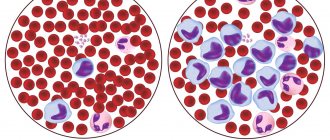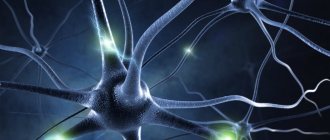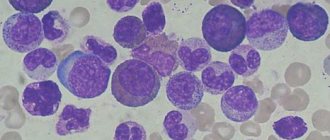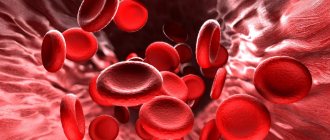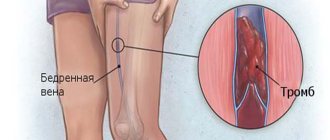What it is?
Acute lymphoblastic leukemia (ALL) is the most common cancer among children. In 80% of cases among all diagnosed cancers in children, acute lymphoblastic leukemia is detected. Children aged 1 to 6 years are most often affected. As medical practice shows, boys get sick more than girls. In adults, the disease is diagnosed 10 times less often than in children.
In younger patients, the disease develops as a primary pathology, while in adults it develops mainly as a consequence of chronic lymphocytic leukemia.
Life forecast
Modern diagnostic and treatment methods have increased the chances of survival among patients. 90% of patients with acute lymphoblastic leukemia survive 5 years from the date of diagnosis. Then they are removed from the oncology register and are considered healthy.
The chances are reduced if there is a negative reaction to chemotherapy and if the white blood cell count is high at the time of treatment for the disease.
Every seventh patient experiences a relapse within 3 years after chemotherapy. Secondary cancer treatment is effective in half of cancer patients.
With good vital signs, leukemia can spontaneously worsen the patient's condition. If suspicious symptoms are detected, urgent diagnosis and treatment are necessary.
Classification
WHO classifies acute lymphoblastic leukemia into four types:
- pre-pre-B-cell;
- pre-B cell;
- B cell;
- T cell.
The B cell type accounts for 80% of the total disease. According to statistics, children as young as three years old suffer from this type of pathology. Experts attribute this fact to the fact that the peak production of bone marrow B cells occurs between the ages of three and four years. However, by the age of 60, a second wave of incidence occurs, but it is not so significant. Specialists are faced with an important task - to determine the type of B cells, since there is another mutated type of them, characteristic of chronic lymphocytic leukemia. This stage in diagnosis is very important, since the prognosis for life with chronic leukemia is higher compared to ALL, therefore, treatment tactics are also different.
The T-cell type accounts for about 20% of cases. Children aged 15 years suffer most from this type of pathology. At this age, the final stage of the formation of T cells is observed, which finally mature and are able to perform their functions.
Prevention of blood cancer
Even a healthy lifestyle does not guarantee one hundred percent protection against leukemia. They can occur at any age. In adults, the risk group includes people over 50 years of age, as well as people working at chemical and radioactive industry enterprises. However, it is still possible to reduce the likelihood of developing cancer. To do this, we recommend following the advice of doctors:
- Spend more time outdoors.
- Don't forget about moderate physical activity.
- Drink at least 1.5 liters of clean water per day.
- Avoid fast food, fatty, fried, overly salty or sweet foods.
- If possible, change your place of residence to a more environmentally friendly area.
And of course, undergo regular medical examinations. It is recommended to visit an oncologist at least once a year; people working in hazardous enterprises - at least once every six months.
You can find a suitable specialist using the convenient “Doctors Online” service.
Leading clinics in Israel
Assuta
Israel, Tel Aviv
Ikhilov
Israel, Tel Aviv
Hadassah
Israel, Jerusalem
Content:
- The essence of the disease
- Causes
- Characteristic signs
- Diagnostics
- Treatment
← Chemotherapy as a method of treating acute myeloblastic leukemia
Leukemia in children - clinical symptoms of the disease →
Lymphoblastic leukemia - what is it? This is the most common pathology that affects the red marrow of the bones, lymph nodes, spleen, thymus and other organs. It affects the hematopoietic system in 75-80% of all cancer diseases. Boys aged 2-5-14 years old are most often affected. Girls and adults get sick less often.
Causes
At the histological level, the cause of the development of acute lymphoblastic leukemia is the uncontrolled proliferation of groups of cells. In medicine, these cells are called a malignant clone. They are formed due to chromosomal mutations. Scientists suggest that even in the prenatal development of a child, a genetic predisposition to lymphoblastic leukemia is laid down. After birth, in the presence of external factors, it is possible to provoke the formation of this disease.
Experts associate the formation of ALL with the following factors:
- lymphoblastic leukemia can provoke the use of radiation therapy to combat other types of cancer processes that a person has suffered from. The probability of developing ALL after radiotherapy is about 10%. 85% of patients develop acute lymphoblastic leukemia within 10 years after finishing this type of therapy;
- There is an assumption that the frequent use of X-ray examinations leads to this pathology. But this theory is still at the level of speculation;
- the infectious nature of the formation of lymphoblastic leukemia also remains at the level of hypothesis;
- infectious diseases suffered by the mother during pregnancy, as well as direct contact with toxic chemicals can provoke lymphoblastic leukemia in the child in the future;
- if the child has diseases associated with genetic abnormalities (Down, Shwachman, Klinefelter, Wiskott-Aldrich syndromes);
- if a child is born overweight, then he is considered to have a predisposition to developing ALL;
- It is assumed that the abuse of bad habits, especially smoking, can become an impetus for the formation of lymphoblastic leukemia.
Several factors can provoke the disease at the same time, as well as the presence of a predisposition to it.
Causes and mechanisms of development
The pathophysiology of tumor growth in leukemia is based on mutations of one hematopoietic cell, which stops responding to the body’s regulatory signals, loses the ability to mature (differentiate), limit the number of divisions (normally cells cease to exist after about 50 mitoses) and begins to multiply uncontrollably.
As a rule, it is impossible to name one single cause of the mutation, especially considering that the majority of patients are children. But there are predisposing factors for the development of leukemia:
- exposure to chemical agents (benzene, some medications);
- biological factors (a typical example is the Epstein-Barr virus, HLTV virus);
- congenital chromosomal aberrations;
- some hereditary diseases (Down, Bloom, Klinefelter, Wiskott-Aldrich syndromes, Falconi anemia);
- physical factors: ionizing, X-ray radiation (workers in X-ray rooms suffer from leukemia more often than average in the population).
All offspring are clones of the original atypical lymphocytic cell, multiplying uncontrollably and suppressing the division and maturation of normal hematopoietic cell sprouts. First, they divide within the bone marrow, then enter the blood, spleen, liver, internal organs - and this becomes the beginning of clinical manifestations.
Symptoms
The peculiarity of this pathology is that it develops very quickly. Within one month, the number of lymphoblasts can double.
Experts divide the symptoms of the disease in acute lymphoblastic leukemia into five groups:
| 1 | intoxicating | weakness, fatigue; |
| rapid weight loss; | ||
| an increase in temperature, which can be caused either by the disease itself or by the addition of a bacterial infection | ||
| 2 | hyperplastic | an increase in the size of the lymph nodes, liver, spleen. This process is associated with the formation of leukemic infiltration of the organ parenchyma; |
| abdominal pain; | ||
| aching pain in joints and bones is caused by an increase in bone marrow volume. | ||
| 3 | anemic | there is a rapid heartbeat; |
| the skin becomes pale; | ||
| a person suffers from weakness and dizziness. | ||
| 4 | hemorrhagic | vascular thrombosis occurs; |
| with the slightest bruises, large bruises form; | ||
| with minor damage to the integrity of the skin, increased bleeding is observed; | ||
| redness of the eyes due to retinal hemorrhage; | ||
| seemingly causeless nosebleeds; | ||
| vomiting with blood due to gastrointestinal bleeding; | ||
| dark stools, also associated with internal bleeding. | ||
| 5 | infectious | due to suppressed immunity, wounds and scratches become direct gateways to viruses and fungal infections. Wounds are difficult to heal; |
| a person with ALL is easily susceptible to viral and infectious diseases |
In addition to the above signs of acute lymphoblastic leukemia, individual symptoms may develop. So, the volume of the lungs is compressed due to the enlargement of the lymph nodes. This leads to respiratory failure. This phenomenon is characteristic of T-cell acute lymphoblastic leukemia.
If the central nervous system is involved in the process, an increase in intracranial pressure is possible, which is accompanied by headache, nausea, and vomiting. But there are cases when damage to the central nervous system passes without any symptoms. This process can only be detected by examining the cerebrospinal fluid.
Boys may have pain in the ovarian area. This is due to organ infiltration.
Experts distinguish four stages of acute lymphoblastic leukemia:
- First stage;
- the height of the illness;
- remission stage;
- terminal stage.
Each period lasts about 1-3 months. The initial stage is characterized by intoxication, hyperplastic and anemic signs of the disease. At the height of the disease, all of the above symptoms are observed. When a period of remission occurs, all signs of lymphoblastic leukemia subside. In the absence of therapy, the terminal stage is accompanied by a sharp deterioration in the person’s condition, which leads to death.
How does the disease progress?
Doctors distinguish five stages of the disease. Each has its own symptoms, and the course of oncology can occur differently, depending on the characteristics of the patient’s body.
- Initial. It is characterized by a latent course of the disease, without pronounced symptoms. It can last up to several years: during this time, the level of leukocytes in the blood will change slightly, and anemia will begin to develop.
- Expanded. It is now that the first symptoms associated with inhibition of hematopoietic functions appear. Feeling begins to deteriorate.
- Remission. This is a period of subsidence of the disease, which can be complete (absence of symptoms and blast cells in the blood) or incomplete (temporary relief of the condition).
- Relapse. Cancer returns: in the bone marrow or outside it, several months or years after treatment.
- Terminal. Immature leukocytes have entered the peripheral blood, and the functions of internal organs are impaired. Usually the terminal stage ends in death.
Diagnostics
Since acute lymphoblastic leukemia develops rapidly, the patient already turns to specialists with a vivid symptomatic picture.
To make an accurate diagnosis, a number of instrumental and laboratory studies are carried out, which are also aimed at distinguishing ALL from other types of leukemia, most often from myeloblastic leukemia.
- A general blood test allows you to evaluate your blood parameters. In acute lymphoblastic leukemia, a low level of hemoglobin is observed, the number of platelets and leukocytes changes, and the ESR increases. The number of neutrophils decreases;
- A biochemical blood test is carried out in order to analyze the condition of the liver and kidneys, since when they are damaged, blood counts change. Due to the absence of an intermediate form of cell maturation, myelocytes and metamyelocytes are found in the blood;
- A myelogram is mandatory in the diagnosis of ALL. It is carried out in three stages. The first test tests bone marrow cells. In the presence of acute lymphoblastic leukemia, they acquire a hypercellular appearance and infiltration with blast cells is formed. The second stage involves cytochemical analysis. At the last stage, the cell type is established, which is carried out by immunophenotyping;
- a spinal puncture is performed to determine the degree of damage to the central nervous system, since with this pathology neuroleukemia is possible;
- Using the ultrasound diagnostic tool, the condition of parenchymal organs and lymph nodes is assessed;
- Chest radiography is necessary to determine the size of the mediastinal lymph nodes, since in ALL they increase.
Before choosing therapy, it is also necessary to determine the condition of other organs or the presence of any diseases. For this purpose, ECG and EchoCG are performed.
Don't waste your time searching for inaccurate cancer treatment prices
*Only upon receipt of information about the patient’s disease, a representative of the clinic will be able to calculate the exact price for treatment.
How to treat
Acute lymphocytic leukemia is treated with polychemotherapy and bone marrow transplantation. Treatment is divided into several stages and is aimed at putting the disease into remission.
Aggressive chemotherapy treatment takes place in a hospital setting. Maintenance therapy can be carried out on an outpatient basis.
Prophase
At this stage, the body is prepared for the main treatment. Prophase involves a short course of chemotherapy lasting no more than a week. 1 or 2 cytostatics are administered intravenously. Preparatory therapy is aimed at gradually reducing the number of leukemia cells. When cancer cells are destroyed, the body is poisoned by decay products. With an abrupt start of aggressive therapy, liver and kidney functions may be impaired. Prophase helps avoid this.
Induction
Induction is a phase of intensive chemotherapy in which several medications are administered intravenously. Treatment is aimed at quickly destroying most of the cancer cells. At this stage, acute lymphoblastic leukemia in adults should go into remission. Induction therapy lasts 5-8 weeks.
Important information: How is leukemia (leukemia) treated and what are the first signs of blood disease (bleeding) in adults
Consolidation
The stage takes 3-4 months. During this period, new chemotherapy drugs are introduced to destroy resistant cancer cells. Treatment is aimed at consolidating remission and preventing neuroleukemia. Chemotherapy agents are infused into the spinal canal to suppress the proliferation of lymphoblasts.
Chemotherapy for acute lymphoblastic leukemia can be combined with radiation. Radiotherapy is indicated for damage to the brain or spinal cord.
Reinduction
Involves intravenous administration of drugs used during induction therapy. Combinations of cytostatics are used in high doses. This helps eliminate remaining blast cells and minimize the chance of a disease such as lymphoblastic leukemia recurring. This stage takes 2-6 months. There are breaks between chemotherapy courses.
Maintenance therapy
This is the longest part of the treatment and is aimed at destroying the cancer cells remaining after intensive therapy. The patient is regularly administered low doses of cytostatics. To normalize the functioning of the hematopoietic system, a bone marrow transplant is performed.
After engraftment of the donor material, the production of healthy blood cells begins, and signs of damage to the lymph nodes disappear. Treatment of acute lymphocytic leukemia should last at least 2 years.
Treatment
When treating acute lymphoblastic leukemia, chemotherapy is most often used.
This therapy takes place in three stages:
- the induction phase is aimed at achieving sustainable remission. Lasts several weeks, depending on the condition and individual characteristics of the patient. During chemotherapy, cytostatics are used. Their goal is to destroy malignant cells and restore healthy hematopoiesis. After completion of therapy, no more than 5% blast content in the bone marrow is allowed. They should not be present in peripheral blood. As medical practice shows, in 85% of cases it is possible to achieve stable remission;
- the consolidation stage is aimed at destroying the remaining harmful cells by intravenous administration of certain chemotherapy drugs (Methotrexate, 6-Mercaptopurine, Vincristine, Prednisolone, Cytarabine, Asparaginase, etc.);
- the stage of maintenance therapy (reinduction), which can last several years, provides support for remission, as well as reducing the risk of relapses in the future. This period is no less important than the previous stages in treatment. Despite the fact that at this stage of treatment outpatient treatment is provided, the patient periodically undergoes examinations, during which the condition of the bone marrow and blood is monitored. During maintenance therapy, medications are prescribed that can be taken orally. 6-Mercaptopurine and methotrexate are mainly prescribed.
Therapy at each stage is selected individually.
Specialists take into account the patient’s age, as well as the presence of other chronic diseases. To maintain immunity, a complex of vitamins and minerals is prescribed, and a certain diet is prescribed. If the therapy described above does not produce results, it is advisable to use a bone marrow transplant.
Treatment of lymphoblastic leukemia
The main method of treating lymphoblastic leukemia is polychemotherapy - a type of chemotherapy that uses not one, but several cytostatic drugs.
Adults develop lymphoblastic leukemia 10 times less often than children. The incidence rate increases among patients over 60 years of age.
There are two stages in the treatment of the disease:
- Intensive or induction therapy. It is carried out in the conditions of the hematologic oncology department for several months. Antitumor drugs are administered intravenously. The goal of this stage is to normalize hematopoietic processes (absence of blasts in the peripheral blood and no more than 5% of them in the bone marrow) and improve the general condition of patients.
- Maintenance therapy. They are carried out over several years on an outpatient basis. Anticancer drugs are prescribed in oral forms. Patients' bone marrow and peripheral blood composition are regularly examined, adjusting treatment if necessary, for example, including radiotherapy or immunotherapy.
In case of low effectiveness of the treatment and repeated exacerbations, the question of the advisability of bone marrow transplantation is decided.

